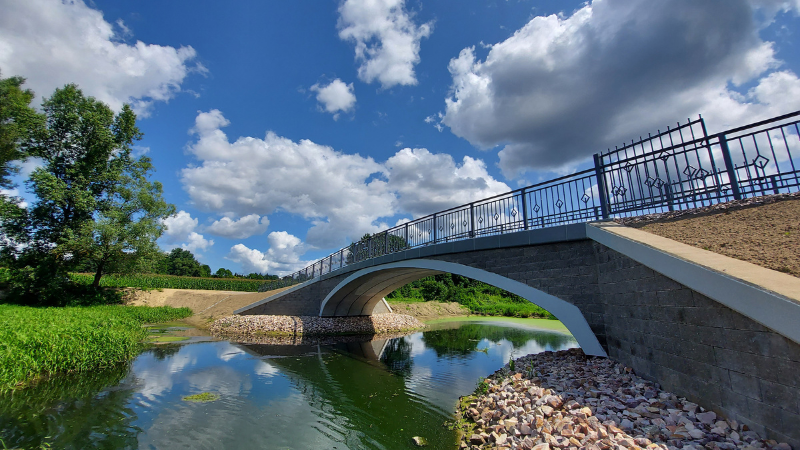Culverts
We provide clients with culverts that create roads underground
In the world of infrastructure and road construction, it is important to consider effective solutions to manage water flows, traffic and environmental protection. Culverts and culverting are two concepts that often come to the fore when it comes to creating smooth passages for water and traffic, and they play a crucial role in preventing flooding and facilitating safe passage.
Culverts are underground tunnels or pipes used to carry water, roads or railways under obstacles such as roads, railways or other types of infrastructure. These culverts allow water flows to pass smoothly and for traffic to continue unhindered above ground. Culverts are a key ingredient in the culverting process and come in varying shapes and sizes depending on the needs of the project.
Areas of application
Water bridges and culverts, road and railway viaducts, wildlife passages, pedestrian tunnels, etc.
Competitive advantages
Overall cost advantage over concrete solutions in several applications, e.g. small water bridges and culverts, ecological crossings, pedestrian tunnels, railway crossings, etc.

Culverting for efficient flow management
Culverting is the process of creating these underground passages or culverts. It is a construction technique used to prevent flooding and allow the smooth passage of water flows under roads, railways or other obstacles. Culverting is important to ensure that water flows can cross these obstacles in a controlled way and that traffic can continue smoothly.
How culverts are used in practice
Water management
Culverts are often used to divert water from rain, streams or drainage systems under roads and railways. They prevent flooding and minimise damage to the road surface.
Road and railway crossings
At road and railway crossings, culverts allow safe passage for vehicles and trains. They ensure that traffic does not affect the railway or road structure.
Environmental protection
Culverts and culverting are also used to promote environmental protection by allowing wildlife to cross roads and railways safely. Ecoducts and ecological passages are examples of this.
Maintenance and longevity
Once installed, culverts usually require minimal maintenance. They are designed to be durable and can have a lifespan of many decades.
In summary, culverts and culverting are essential to modern infrastructure and drainage systems. They enable the safe passage of water, traffic and wildlife and are essential components of construction projects that require smooth flow management and flood protection.
The choice of the right type of culvert and its proper installation is crucial to ensure their effectiveness and durability. So the next time you drive over a bridge or see a road crossing, think about the underground passages that make it possible.
Contact your local ViaCon representative
A culvert is an underground tunnel or pipe designed to carry water under an obstacle, such as a road or railway. Its primary purpose is to allow water to pass through smoothly, preventing flooding and ensuring that traffic can continue unhindered above ground.
Culverts are highly versatile and used in many types of infrastructure projects, including:
-
Water wanagement: Diverting streams, rivers, and rainwater under roads to prevent flooding.
-
Transport crossings: Creating passages for roads and railways (viaducts).
-
Wildlife passages: Allowing animals to safely cross under busy transport routes through underground passages.
-
Pedestrian tunnels: Providing safe crossings for people.
The main benefits include:
-
Flood prevention: They effectively manage water flows to protect infrastructure and surrounding areas.
-
Uninterrupted traffic flow: They ensure roads and railways remain operational and safe.
-
Durability and low maintenance: They are designed for a very long lifespan (many decades) with minimal maintenance requirements.
-
Cost-effectiveness: They offer a significant overall cost advantage compared to concrete solutions in many applications.
Culverts play a crucial role in environmental protection by functioning as wildlife passages or ecoducts. These allow animals to safely cross under roads and railways, which helps to preserve natural habitats, reduce wildlife-vehicle collisions, and maintain ecological connectivity.
A culvert is the physical structure (the tunnel or pipe). Culverting is the construction process of creating these underground passages to manage the flow of water and traffic.
ViaCon’s culverts provide a competitive advantage through a combination of factors. They offer a significant overall cost advantage compared to traditional concrete solutions in applications like small water bridges, wildlife passages, and pedestrian tunnels. Furthermore, they are engineered for durability and a long lifespan with very low maintenance, making them a smart and economical long-term investment.
